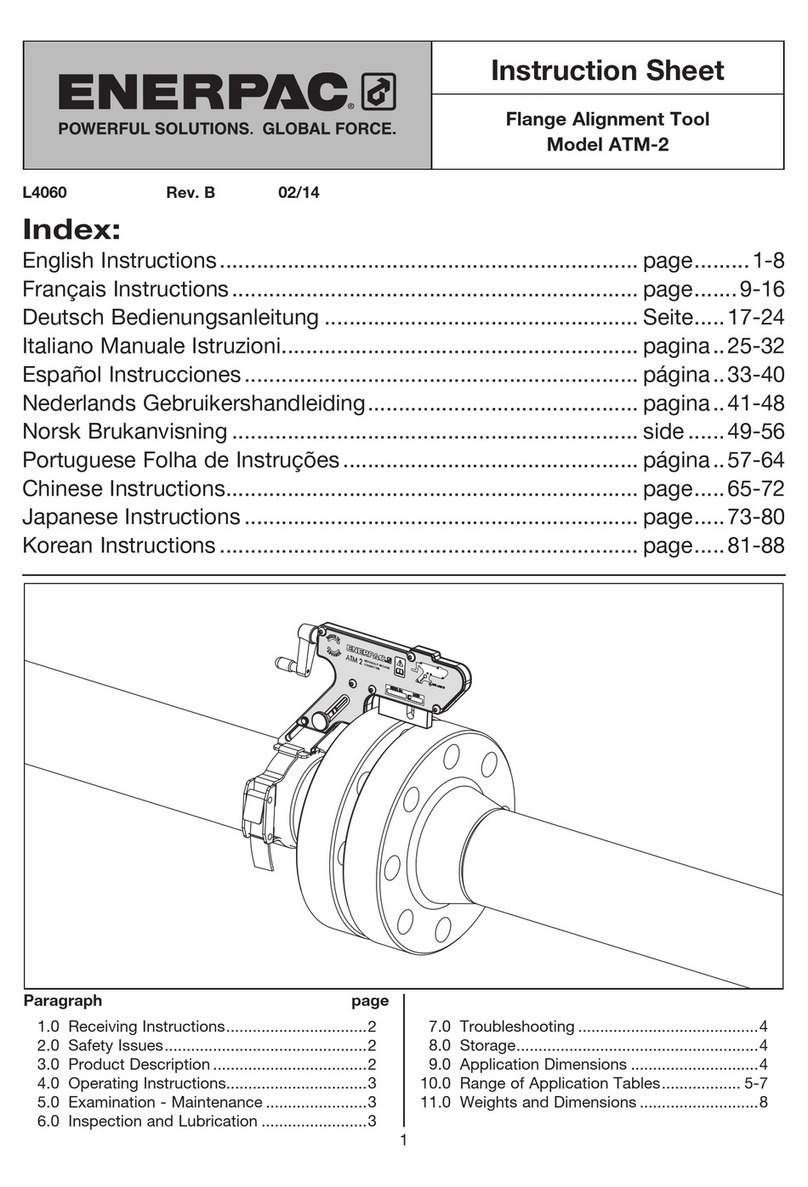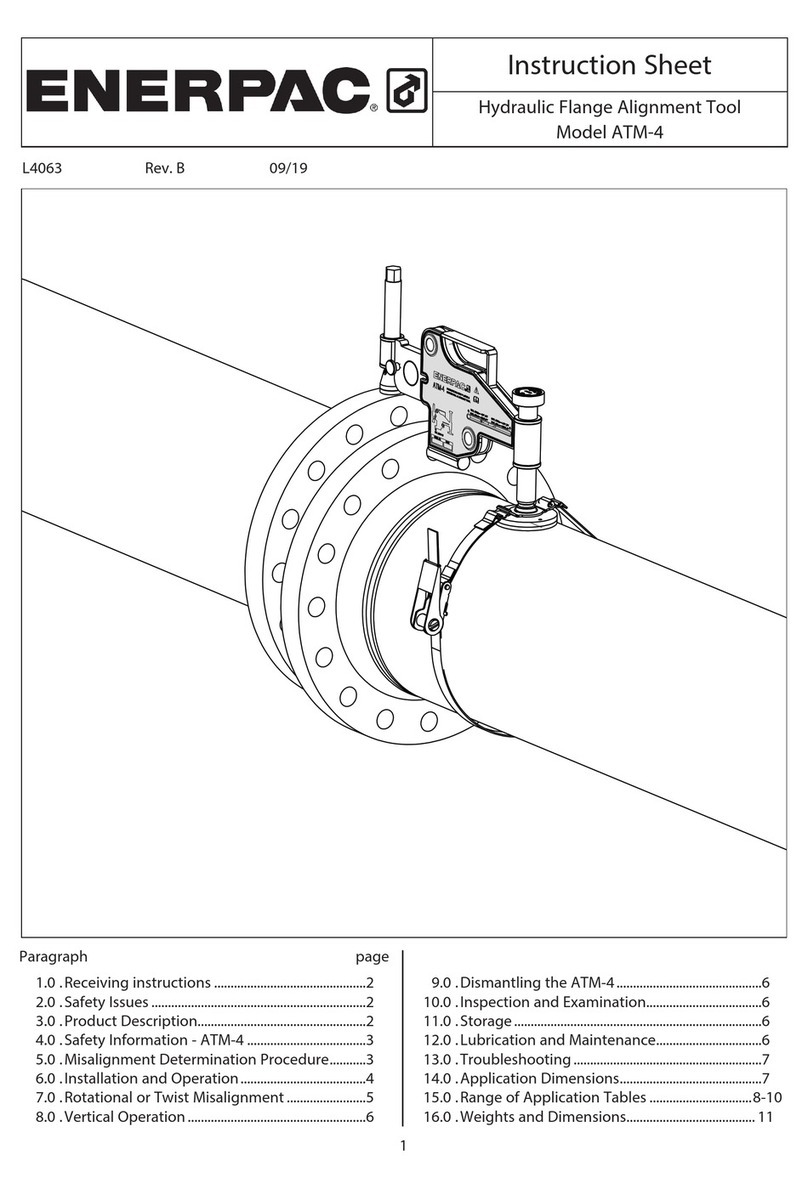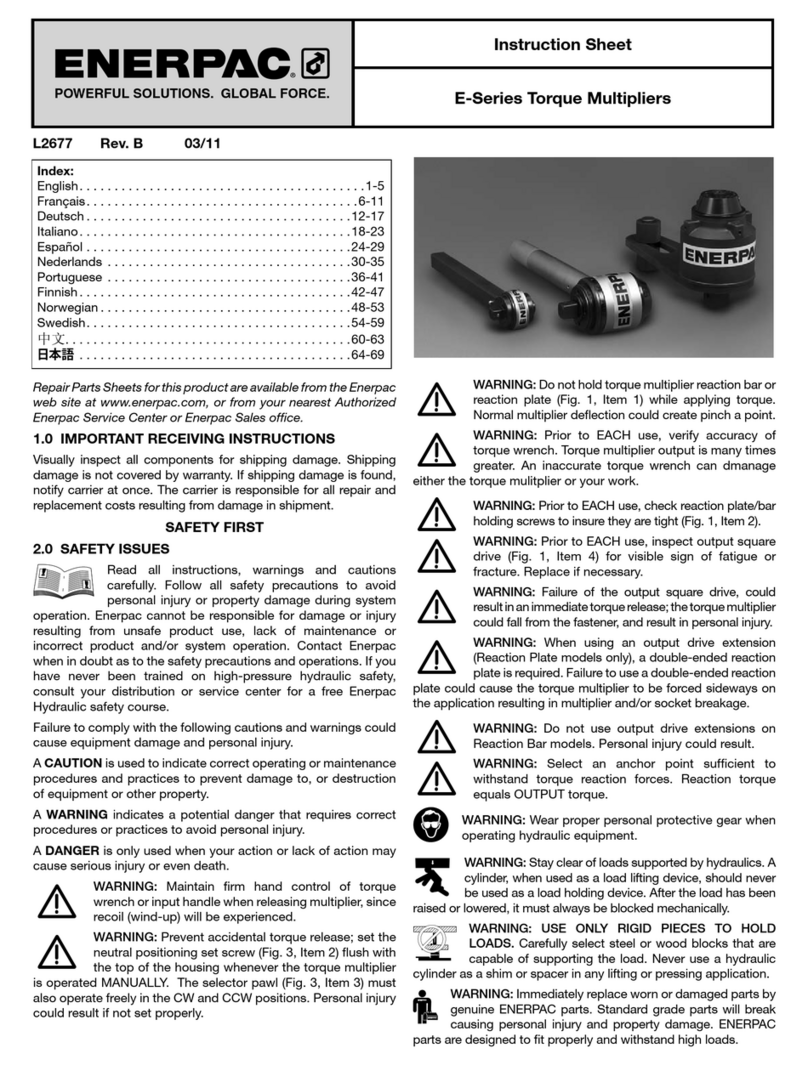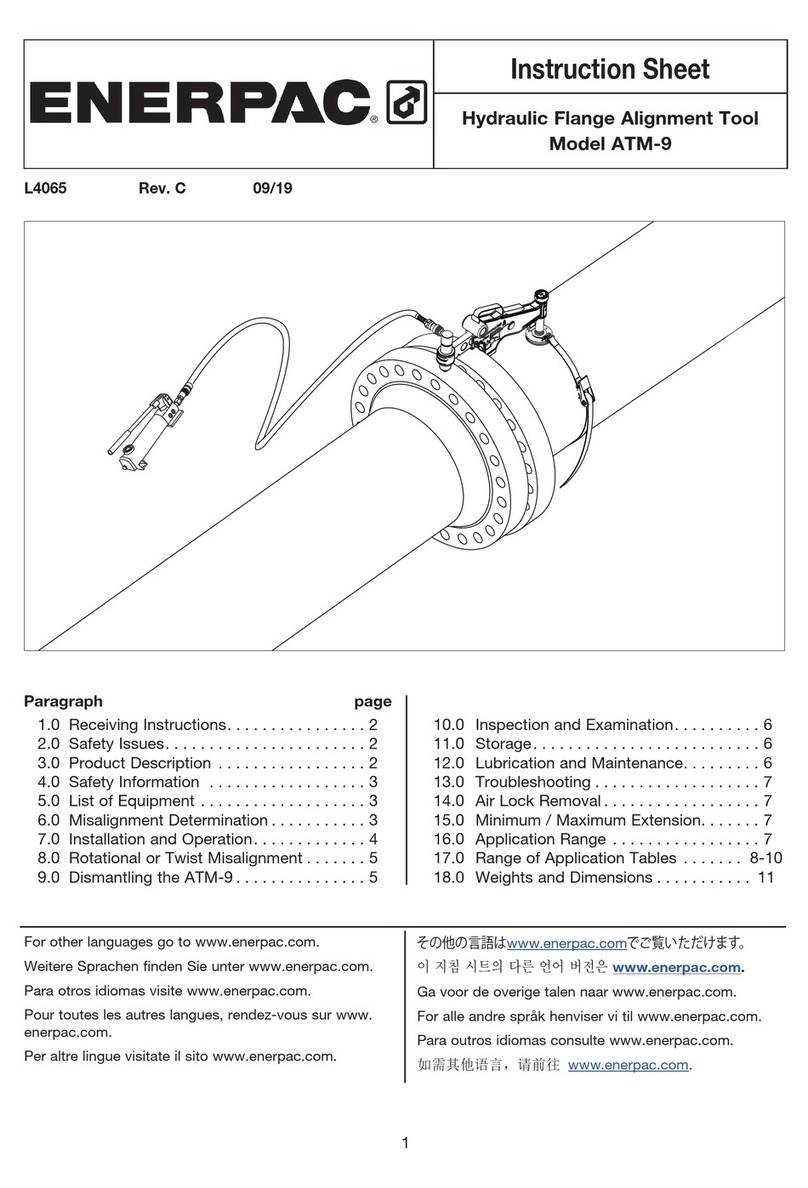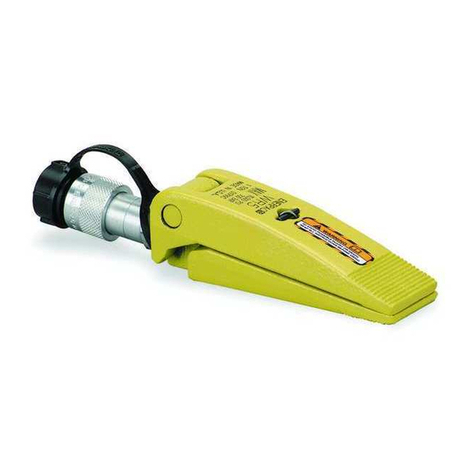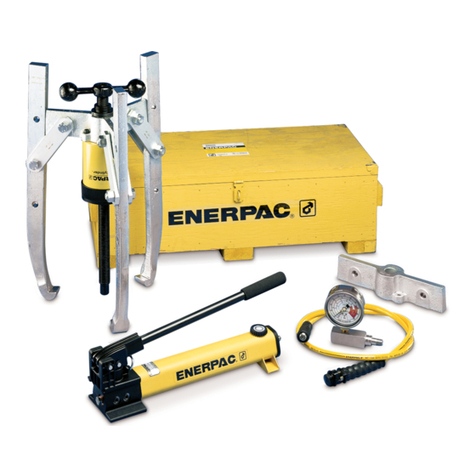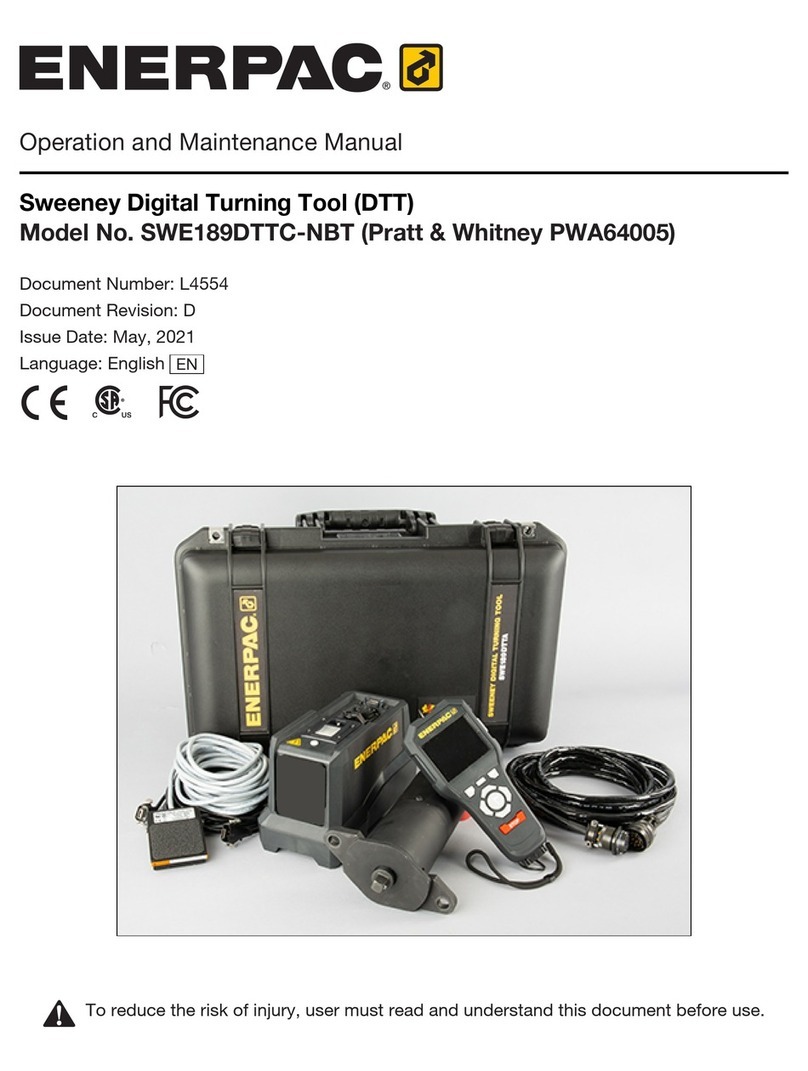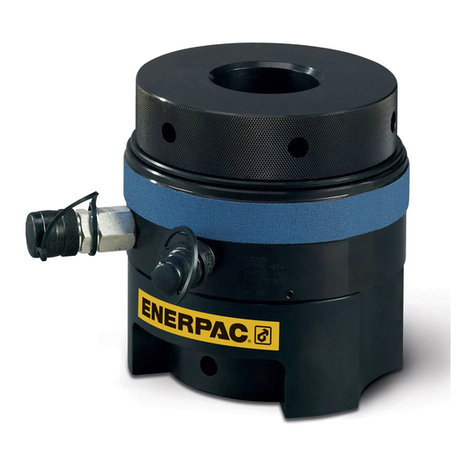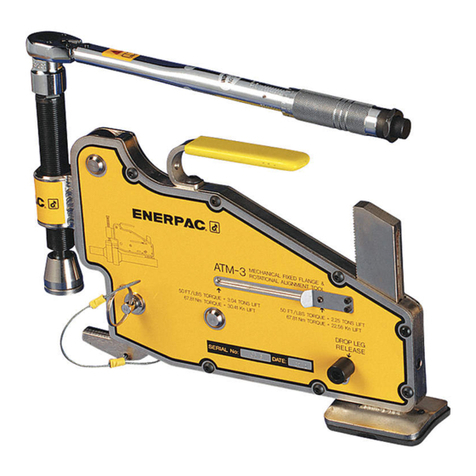
4L4390
2.0 Safety
Read all introductions carefully. Follow all
recommended safety precautions to avoid
personal injury as well as damage to the
product and / or damage to other property.
Equalizer cannot be responsible for any
damage or injury from unsafe use, lack
of maintenance, or incorrect operation.
Do not remove warning labels, tags, or
decals. In the event of any questions or
concerns arising, contact Equalizer or a
local Equalizer distributor for clarification.
If you have never been trained on high-
pressure hydraulic safety, consult your
distributor or service centre for information
about Equalizer Hydraulic Safety Courses.
This manual follows a system of safety
alert symbols, signals, words, and safety
messages to warn the user of specific
hazards. Failure to comply with these
warnings could result in death or serious
personal injury, as well as damage to the
equipment or other property.
The Safety Alert Symbol
appears throughout this
manual. It is used to alert
you to potential physical
injury hazards. Pay close attention to
Safety Alert Symbols and obey all safety
messages that follow this symbol to avoid
the possibility of death or serious injury.
Safety Alert Symbols are used in
conjunction with certain Signal Words
that call attention to safety messages
or property damage messages and
designate a degree or level of hazard
seriousness. The Signal Words used in
this manual are WARNING, CAUTION,
and NOTICE.
Indicates a hazardous
situation that, if not avoided, will result
in death or serious personal injury.
DANGER
Indicates a hazardous
situation that, if not avoided, could result
in death or serious personal injury.
Indicates a hazardous
situation that, if not avoided, could result
in minor or moderate personal injury.
Indicates information
considered important, but not hazard
related (e.g. messages related to property
damage). Please note that Safety Alert
Symbol will not be used with the signal
word.
DO: an illustration showing how
the tool should be used.
DON’T: an illustration showing an
incorrect way to use a tool.
2.1 Safety Precautions - Flange
Spreading Wedges
Failure to observe and comply with
the following precautions could result
in death or serious personal injury.
Property damage could also occur.
• Read and completely understand the
safety precautions and instructions
in this manual before operating the
Flange Spreading Wedges or preparing
them for use. Always follow all safety
precautions and instructions, including
those that are contained within the
procedures of this manual.
• Ensure all hydraulic components are
rated to a safe working pressure of
700bar (10 000psi).
• Do not overload equipment. The risk of
hydraulic overloading can be minimised
by using the Equalizer Hand Pump,
which has a factory-set safety valve
preventing the safe working pressure
being exceeded.
WARNING
CAUTION
WARNING
